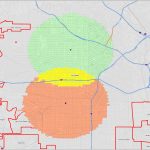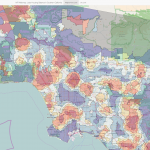Defining “neighborhoods” is challenging for researchers. In prior research lab members Dr. Hipp and Dr. Adam Boessen proposed a novel measure, termed “egohoods”, that captures the area surrounding a particular block (based on straight-line distance). This new study extends this idea by explicitly incorporating the street network into the measure. This approach measures street egohoods based on the local street block, and then all adjacent streets. A second definition includes all street blocks one or two streets away from the focal block. We believe that these are plausible “neighborhoods” since residents can easily come into contact one or two street blocks away from their own street block. The approach is demonstrated using data for the Southern California region, we find that this measure of immigrant neighborhoods often exhibits a robust negative relationship with levels of crime.
You can access the article by Dr. Young-an Kim and Dr. John R. Hipp in the Journal of Quantitative Criminology entitled, “Street Egohood: A New Perspective of Measuring Neighborhood Based on Urban Streets.”
Get it here: https://link.springer.com/article/10.1007/s10940-019-09410-3
[Read more…] about Lab publication for new way to measure neighborhoods: Street egohoods
 Egohoods are an overlapping approach to constructing neighborhoods—whereas almost all other approaches to constructing neighborhoods utilize a non-overlapping approach (neighborhoods do not overlap with one another), egohoods take an explicitly spatial approach to measuring context.
Egohoods are an overlapping approach to constructing neighborhoods—whereas almost all other approaches to constructing neighborhoods utilize a non-overlapping approach (neighborhoods do not overlap with one another), egohoods take an explicitly spatial approach to measuring context. 